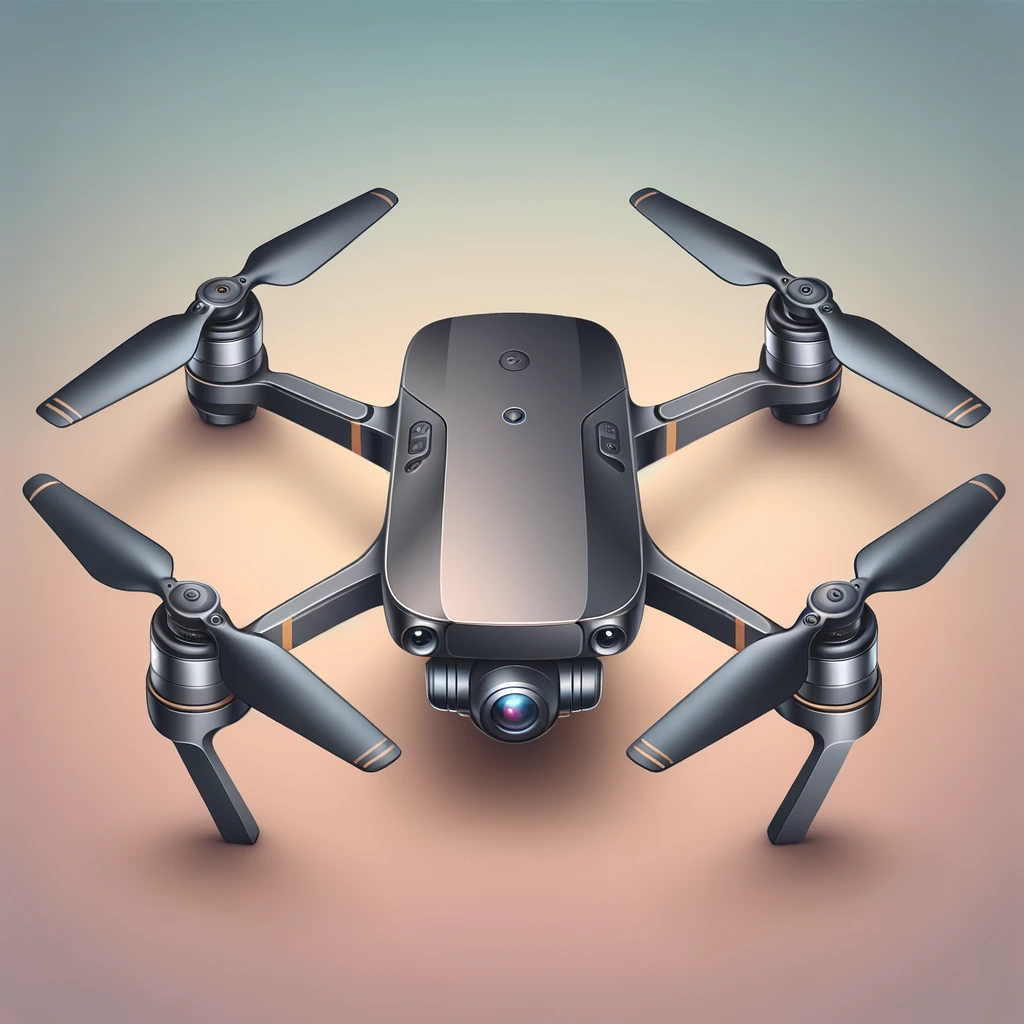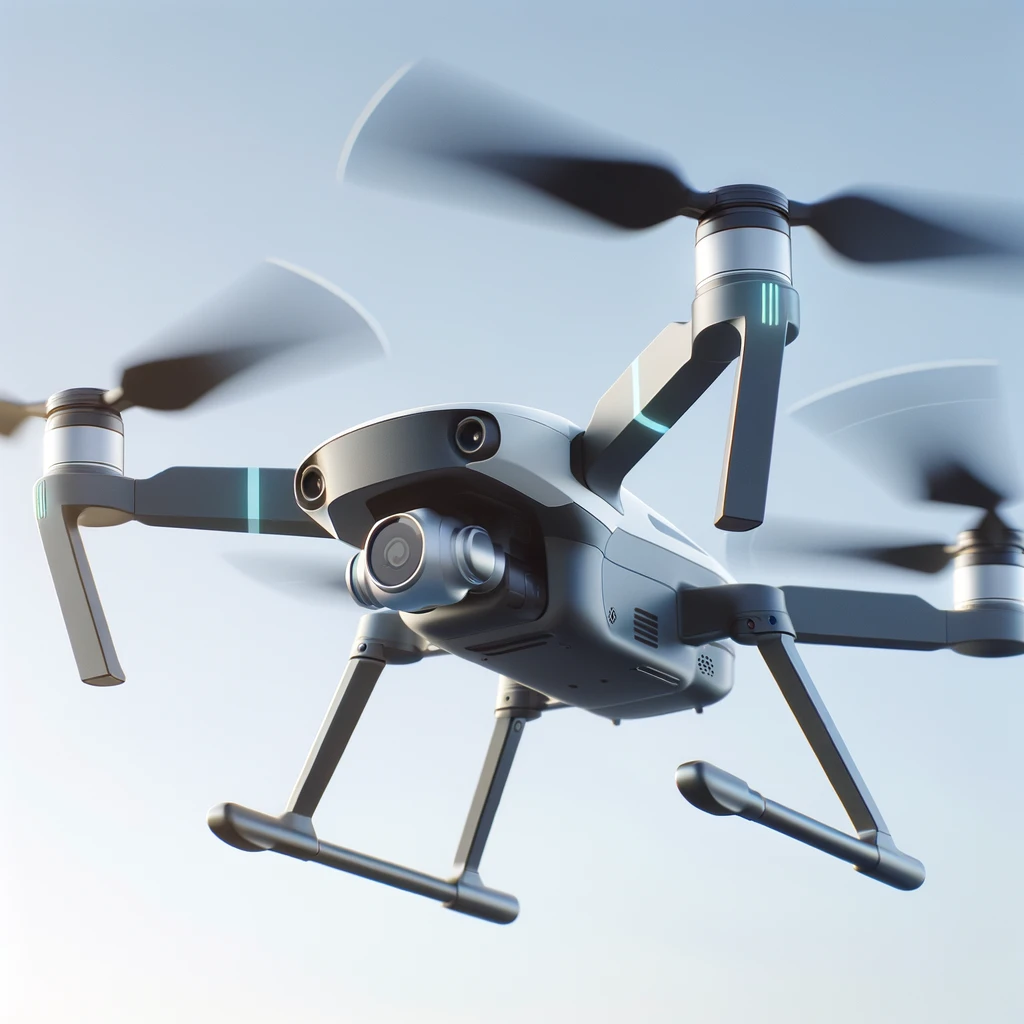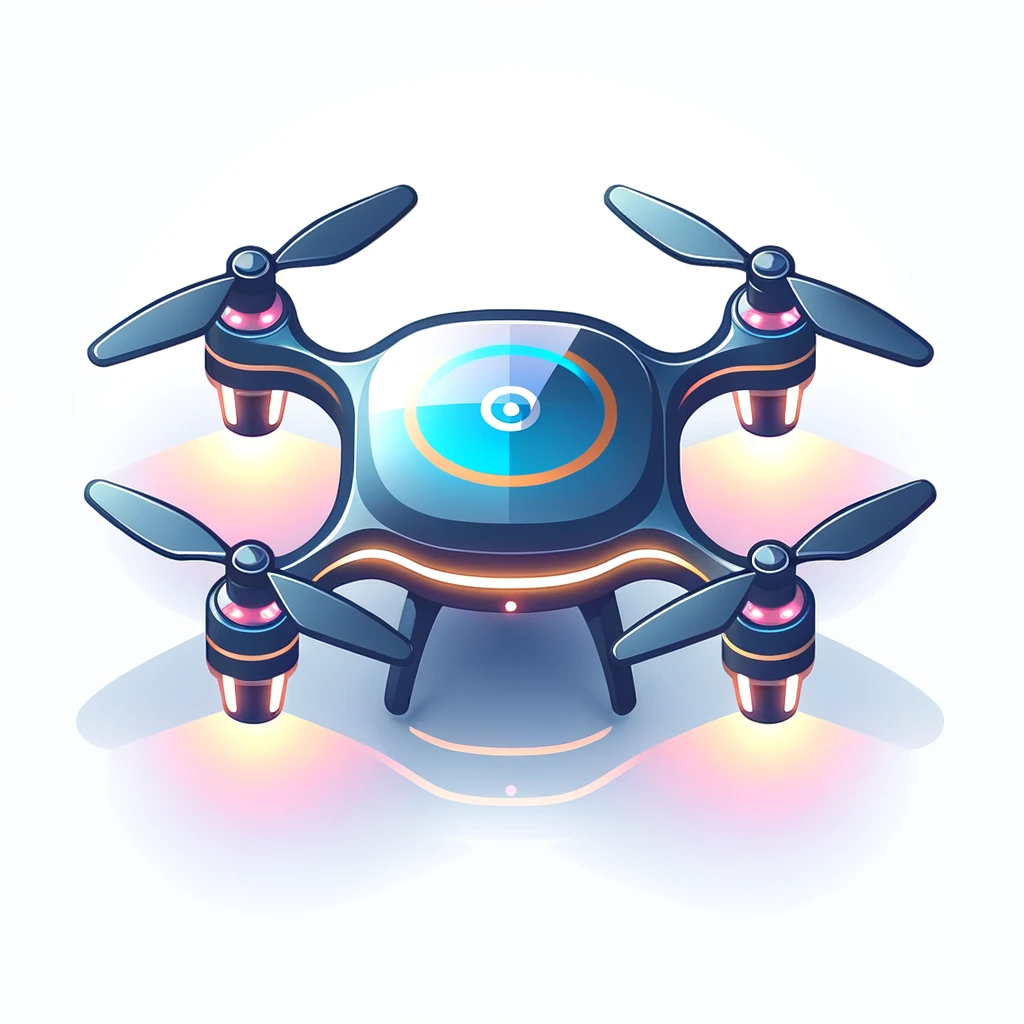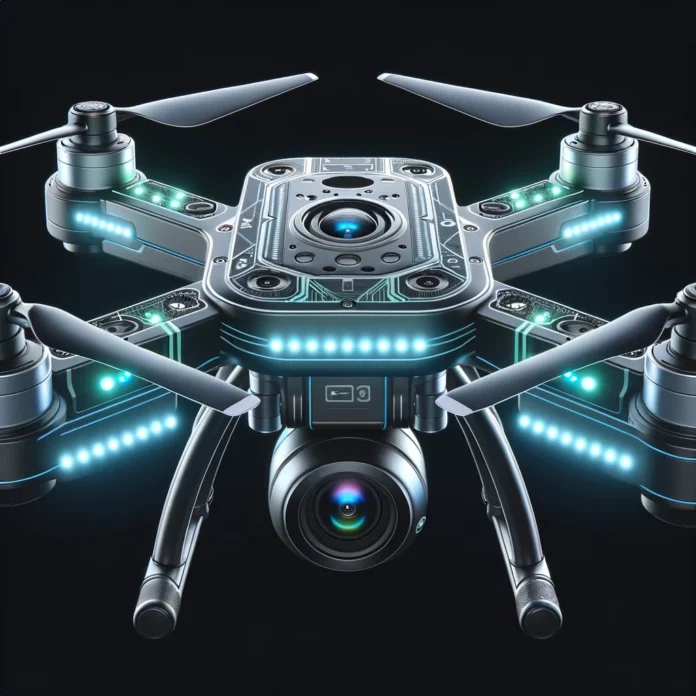Table of Contents
- Understanding Drone Battery Lifespan
- Extending the Life of Your Drone Battery
- Decoding Drone Battery Technologies: Which Type Lasts Longer?
- How to Properly Maintain and Store Drone Batteries for Prolonged Lifespan
- What to Expect from Different Drone Battery Capacities
- Advanced Strategies for Maximizing Drone Battery Life During Real-Time Operations
- Exploring Future Possibilities: Emerging Technologies for Longer-Lasting Drone Batteries
- People Also Ask
- Final Words
Drones have revolutionized the way we capture breathtaking aerial shots, explore unknown territories, and even deliver packages.
But amidst their high-flying feats, one question constantly lingers in the minds of drone enthusiasts: how long do drone batteries last?
Whether you’re an aspiring pilot or a seasoned pro, understanding battery life is vital when it comes to planning your flight missions and pushing the limits of your airborne companion.
In this article, we’ll delve into the factors that affect drone battery performance, explore different battery types, and provide practical tips to make the most of your flight time.
So fasten your seatbelts and get ready to uncover the secrets behind the flight endurance of these fascinating unmanned aircraft.
Understanding Drone Battery Lifespan
In order to understand how long drone batteries last, it is important to consider the various factors that impact their durability and performance. Drone battery lifespan can vary significantly based on these factors, and being aware of them can help users make informed decisions about battery usage and maintenance.
One of the primary factors impacting drone battery lifespan is the quality of the battery itself. Higher-quality batteries are generally built with better materials, which can result in longer lifespans and improved performance. It is recommended to invest in batteries from reputable manufacturers to ensure reliability and longevity.
Another critical factor is battery capacity, which refers to the amount of energy a battery can store. Drones with higher battery capacities generally have longer flight times. However, it is important to note that flight time can also be affected by other factors such as the weight of the drone and the flying conditions.

Extending the Life of Your Drone Battery
In order to make the most out of your drone and ensure long-lasting performance, it is important to take proper care of your drone battery. By following these essential tips and best practices, you can extend the life of your drone battery and enjoy more flight time.
Charge your battery correctly
One of the most crucial factors in extending your drone battery’s lifespan is to charge it correctly.
Always use the charger provided by the manufacturer and avoid using generic chargers, as they may not be compatible and could potentially damage the battery.
It is also recommended to charge your battery at room temperature, as extreme temperatures can significantly impact its performance and longevity.
Monitor your battery usage
Keeping track of your battery usage can help you identify patterns and adjust your flight time accordingly. It is important to avoid draining the battery completely during each flight, as deep discharges can shorten the battery’s overall lifespan.
Aim to land your drone when the battery level reaches around 30% to 40% remaining, to ensure a healthy balance between flight time and battery longevity.
Avoid overcharging and over-discharging
Overcharging and over-discharging can have detrimental effects on your drone battery. Always keep an eye on the charging process and unplug the battery once it reaches 100% capacity.
Similarly, it is crucial to avoid over-discharging the battery, as this can lead to irreversible damage. Many drones have built-in low battery warnings or return-to-home features to help prevent over-discharging, so be sure to use these features to protect your battery.
Store your battery properly
When not in use, it is important to store your drone battery in a cool, dry place. Extreme temperatures can negatively affect the battery, so avoid leaving it in direct sunlight or in freezing conditions.
It is also recommended to store the battery at around 30% to 60% charge, as storing it at full or empty capacity can lead to degradation over time. Additionally, ensure the battery is disconnected from the drone during storage to prevent any power drain.
By following these essential tips and best practices, you can significantly extend the life of your drone battery and maximize your flight time. Investing in good battery maintenance and proper charging techniques will not only save you money in the long run but also provide a more reliable and enjoyable drone flying experience.

Decoding Drone Battery Technologies: Which Type Lasts Longer?
In this section, we will dive into the different types of drone batteries available in the market and discuss which ones tend to have a longer lifespan.
Decoding drone battery technologies is essential for drone pilots who want to make an informed choice and get the most out of their investment.
Let’s explore the various options and understand the pros and cons of each type.
Lithium Polymer (LiPo) Batteries
LiPo batteries are one of the most common types used in drones due to their high energy density and relatively lightweight. They offer good performance and are capable of delivering high discharge rates, making them suitable for aerial photography or racing drones.
LiPo batteries can also be charged quickly, usually within an hour or two. However, they require special care and attention during charging, storage, and usage to prevent overcharging, overheating, or swelling.
Lithium-Ion (Li-Ion) Batteries
Li-Ion batteries are known for their stability, long lifespan, and low self-discharge rate. They are commonly used in consumer electronics and are gradually being adopted by drone manufacturers.
Compared to LiPo batteries, Li-Ion batteries have a slightly lower energy density but provide a longer overall lifespan.
They are less prone to swelling and offer a higher tolerance for overcharging, making them relatively easier to maintain and handle.
Nickel-Metal Hydride (NiMH) Batteries
Although less commonly used in drones these days, NiMH batteries still have their place in certain applications. They are generally cheaper than LiPo or Li-Ion batteries and have a greater tolerance for overcharging and high discharge rates.
However, they have a lower energy density, resulting in shorter flight times. They also suffer from a memory effect, which can reduce overall capacity over time if not managed properly.
When it comes to which type of battery lasts longer, it depends on various factors such as usage, maintenance, and charging practices.
However, in general, Li-Ion batteries are considered to have a longer lifespan compared to LiPo batteries. This is mainly due to their stability and the fact that they can withstand more charge and discharge cycles.
It is worth mentioning that battery technology is continually evolving, and new advancements are being made to improve the lifespan and performance of drone batteries. So, it’s always a good idea to stay updated with the latest developments in the field.
By understanding the different types of drone batteries and their characteristics, you can make an informed decision based on your specific requirements and maximize the longevity of your drone’s battery life.
How to Properly Maintain and Store Drone Batteries for Prolonged Lifespan
To ensure an extended lifespan for your drone batteries, proper maintenance and storage practices are essential.
In this section, we will discuss the best methods for maintaining and storing your drone batteries, maximizing their longevity and performance.
Drone batteries are a crucial component for their functionality, and it is important to take proper care of them to ensure optimal performance and safety.
By following these best practices, you can ensure that your drone batteries will last longer and provide you with more flight time.
1. Charge and Discharge Properly
When it comes to charging and discharging your drone batteries, it is important to follow the manufacturer’s instructions. Overcharging or discharging the batteries can significantly reduce their lifespan.
Make sure to use the correct charger and avoid leaving the batteries plugged in for an extended period after reaching a full charge.
Similarly, avoid emptying the battery completely during flight, as this can damage the cells. Maintaining a balance between charging and discharging helps in prolonging the lifespan of your drone batteries.
2. Store Batteries Correctly
When storing your drone batteries, it is essential to follow a few key guidelines. First, ensure that the batteries are stored in a cool and dry place, away from direct sunlight or extreme temperatures.
Extreme heat or cold can negatively impact the battery’s performance and potentially lead to permanent damage. Additionally, it is advisable to store the batteries at a partial charge, around 40-60%.
Storing them fully charged or completely discharged for a prolonged period can degrade their capacity. Finally, use a fireproof and temperature-resistant battery storage bag or case for enhanced safety.
3. Regularly Inspect and Clean
Regular inspections and cleaning are essential to keep your drone batteries in good condition. Before and after each flight, inspect the batteries for any signs of damage, such as bulging, leakage, or dents. If you notice any issues, it is vital to replace the battery immediately.
Additionally, keep the battery contacts clean and free from debris, using a dry and lint-free cloth to wipe them. This helps maintain a good connection and ensures optimal performance.
Remember, proper maintenance and storage practices significantly contribute to the lifespan and performance of your drone batteries. By following these guidelines, you can maximize their longevity, save costs on replacements, and enjoy extended flight times.

What to Expect from Different Drone Battery Capacities
Flight duration plays a crucial role in determining the efficiency and productivity of any drone operation. Understanding the flight duration capabilities of different drone battery capacities is essential for optimizing flight plans, managing expectations, and achieving desired outcomes. This section aims to provide an overview of the average flight durations you can expect from various drone battery capacities.
Small Capacity Batteries (Below 2,000mAh)
Small-capacity batteries are commonly found in entry-level drones or compact recreational models. While these batteries may offer convenience in terms of their lightweight and compact designs, they typically provide shorter flying times.
On average, you can expect drones equipped with small-capacity batteries to offer flight durations ranging from 5 to 10 minutes.
Keep in mind that factors like wind conditions, payload weight, and flight maneuvers can slightly impact the actual flight time.
Medium Capacity Batteries (2,000mAh to 5,000mAh)
Medium-capacity batteries are often found in more advanced consumer drones and some professional-grade models.
These batteries offer a balance between flight duration and overall drone performance. With medium-capacity batteries, you can typically achieve flight durations ranging from 15 to 30 minutes.
However, it’s important to note that flight time can vary based on factors such as the drone’s weight, speed, and environmental conditions.
High Capacity Batteries (Above 5,000mAh)
High-capacity batteries are primarily used in professional-grade drones designed for commercial and industrial applications. These batteries provide extended flight durations, allowing for more extended and complex operations.
With high-capacity batteries, drones can typically stay airborne for 30 to 60 minutes, depending on various factors.
It’s important to note that drones using high-capacity batteries might be bulkier and heavier, which can impact maneuverability and overall flight performance.
It is crucial to remember that these flight durations are general estimates and can vary depending on multiple factors.
Factors such as flight speed, payload weight, wind conditions, and the efficiency of the drone’s power management system play a significant role in determining the actual flight duration.
Additionally, it is important to consider that battery performance tends to degrade over time. Regularly assessing battery health and capacity is essential to ensure optimal flight duration and avoid unexpected power failures during operations.
Advanced Strategies for Maximizing Drone Battery Life During Real-Time Operations
In order to get the most out of your drone’s battery life during real-time operations, it is essential to adopt advanced strategies that help prolong its duration in the air.
These strategies can significantly enhance your overall flight experience and ensure that you achieve your desired goals without any interruptions due to a drained battery.
Here are some expert tips to maximize your drone’s battery life during real-time operations:
1. Optimize Flight Settings
One of the key strategies to maximize drone battery life is to optimize the flight settings.
By adjusting your drone’s flight settings to a slower speed and lower altitude, you can conserve battery power and extend the time your drone can stay in the air.
Additionally, reducing the payload, such as removing unnecessary accessories or using lighter cameras, can also help reduce power consumption and increase flight time.
2. Plan Efficient Flight Routes
Proper flight planning can greatly improve your drone battery’s lifespan. By studying the area beforehand and carefully choosing your flight routes, you can avoid obstacles, minimize unnecessary maneuvering, and reduce battery drain.
Planning your flights in a way that minimizes hovering and maximizes steady forward movement can significantly extend your battery’s duration.
3. Utilize Battery Saving Modes
Most modern drones come with built-in battery-saving modes that can be enabled to optimize power consumption.
These modes often include features like auto-landing at a pre-set battery level, automatic return-to-home functionality, and low battery warnings.
By utilizing these modes, you can ensure that your drone efficiently utilizes the available battery power and safely returns home before the battery is completely drained.
4. Monitor Battery Levels
Constantly monitoring your drone’s battery levels is crucial during real-time operations. By regularly checking the battery level indicator on the drone’s controller or using battery level monitoring apps, you can ensure that you have sufficient power to complete your mission or safely return to the starting point.
Being aware of the remaining battery life allows you to make informed decisions and adjust your flight plan accordingly, avoiding unexpected battery failures.
By implementing these advanced strategies, you can enhance your drone’s battery life during real-time operations and accomplish your objectives with optimum efficiency.
Remember, every minute of extra flight time contributes towards capturing the perfect shot, completing critical tasks, or simply enjoying an extended flight experience.
So, make the most out of your drone’s battery and explore the vast possibilities it offers in the aerial realm.
Exploring Future Possibilities: Emerging Technologies for Longer-Lasting Drone Batteries
In the rapidly evolving world of drone technology, researchers and engineers are constantly pushing the boundaries to develop more advanced and efficient drone batteries.
These innovative technologies aim to address the limitations of current battery models and significantly extend the flight time of drones.
By exploring these emerging possibilities, drone enthusiasts can gain insights into the future trends and advancements in the field of drone batteries.
One such emerging technology that holds promise for longer-lasting drone batteries is the use of solid-state batteries. Unlike traditional lithium-ion batteries, which rely on liquid electrolytes, solid-state batteries utilize solid materials that conduct ions.
This enables them to offer higher energy density, improved safety, and longer lifespan compared to their liquid counterparts.
With ongoing research and development, solid-state batteries have the potential to revolutionize the drone industry by providing increased flight durations and enhanced overall performance.

Another promising technology being explored is the use of hydrogen fuel cells as an alternative power source for drones. Fuel cells convert hydrogen into electricity, producing zero emissions and providing a significantly longer flight time compared to traditional batteries.
While there are still practical challenges to overcome, such as size and weight limitations, researchers are actively working on developing compact and lightweight hydrogen fuel cells specifically designed for drone applications.
If successful, this technology could revolutionize the drone industry by enabling longer flights and reducing the downtime required for recharging or replacing batteries.
In addition to solid-state batteries and hydrogen fuel cells, other emerging technologies being explored include energy harvesting solutions and improved energy management systems.
Energy harvesting involves capturing and utilizing ambient energy, such as solar power or kinetic energy, to recharge or supplement drone batteries during flight. This technology can potentially extend the flight time and reduce the reliance on traditional battery power.
Similarly, advanced energy management systems aim to optimize battery usage, minimize power wastage, and improve overall system efficiency.
As these emerging technologies continue to be researched and refined, the drone industry holds a promising future with longer-lasting batteries that will unlock new possibilities for aerial photography, surveillance, delivery systems, and more.
While some of these technologies are still in the experimental stage, their potential impact on the drone ecosystem is significant, and it’s only a matter of time before they become commercialized and accessible to drone enthusiasts worldwide.
People Also Ask
1. How long do drone batteries typically last?
Drone batteries typically last between 10 to 30 minutes of flight time, depending on the specific make and model of the drone. Factors such as size, weight, and flying conditions can also affect battery life.
2. Can drone batteries be replaced or upgraded?
Yes, drone batteries can be replaced or upgraded. Most drones have removable batteries that can be easily swapped out for a fully charged one. It is also possible to purchase higher-capacity batteries to extend flight time, but compatibility with the drone model should be confirmed.
3. What affects the lifespan of a drone battery?
Several factors can affect the lifespan of a drone battery, including the number of charge cycles it has gone through, how it has been stored, and the temperature conditions it has been exposed to. Proper storage and regular maintenance can help prolong the life of a drone battery.
4. How long does it take to charge a drone battery?
The charging time for a drone battery varies depending on the charger and battery capacity. On average, it can take around 1 to 2 hours to fully charge a drone battery. Rapid chargers are available that can significantly reduce charging time.
5. Can drone batteries be dangerous?
Yes, drone batteries can be dangerous if mishandled or damaged. They contain a high amount of energy and are prone to causing fires or explosions if not handled properly. It is essential to follow the manufacturer’s instructions and safety guidelines when charging, storing, and using drone batteries.
Final Words
In conclusion, the average flight time for drone batteries is typically around 10 to 30 minutes.
However, this can vary depending on factors such as the drone’s make and model, flying conditions, and battery capacity.
It is important to consider these factors when planning drone flights and to follow proper battery maintenance and safety protocols to ensure optimal battery lifespan and usage.

